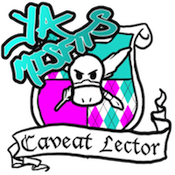Hey, sweet readers.
Either we've known each other for awhile or we're planning on the sticking it out for the long haul, yes? So I might as well be honest with you. I need to tell you three things right now:
1. I'm a pantser, (which you might have known.)
2. But I hate that about myself, (which you probably didn't know.)
3. I am LAZY. (which, if you've been paying attention at all, you definitely knew.)
So, what does a lazy pantser do when she wants to write with an outline but doesn't actually want to write an outline?
She writes a redux.
It makes perfect sense! You can just take a story you love, change some details to put it in a different setting, or a different universe, or add some aliens, or change someone's gender, and BAM! Awesome story! Outlined for you! Just write it! SO EASY.
Right?
So very very not even close to right.
I'm currently working on a Bible story redux and an Austen redux, and the first thing I'm learning is that the first step in any redux is perhaps the most counterintuitive -
Separate yourself from the story.
This was so, so tough. I'm doing this redux because I love the story. LOVE it. But in order to do this redux right, I had to first tear myself away from making gaga eyes at it so that I could completely critically rip that sucker apart.
These are all issues I'll be exploring in subsequent posts, but questions like:
- What was the original pacing of the story? How does it need to be changed for a contemporary reading audience?
- Where - and what - are the themes?
- What did the settings, characters, and individual events symbolize and accomplish plot-wise?
- Are there too many characters? Too few? Do I have to change any? How much? Why?
- How do the character triumphs and flaws translate into my new setting and/or plot? Do I need to change any of those?
- How do the character relationships translate into my new setting/plot? Do I need to change any of those?
- What am I trying to communicate with this story, and to what extent does the original story serve that purpose? What needs to be fundamentally the same, and what can I change without ruining that message? What must I change to get that message across to a contemporary audience?
Now that I'm typing this all out, I'm realizing that the question I should have been asking myself when I started these reduxes is not what I wanted to change about the original, and why, but what I could reasonably keep, and why.
(The important part being WHY. I can't let flaws in the original story and/or how it translates to be an excuse for lazy writing. No deus ex machinas, telling instead of showing, or stock characters allowed.)
In other words? I thought writing a redux would be easier, but it's actually way, way, way harder.
I guess it's a good thing I love the story.
What about you, sweet readers? Have you had experiences with reduxes, either reading them, watching them (yay Clueless and Ten Things!) or writing them? Tell us in the comments!







I have to agree. The redux of "Attraction" we talked about... so much harder than just normal plotting. It is all those things you said. What needs to stay and go and why...Those are excellent questions. Thanks! <3
ReplyDeleteSo those three things about you? That is me, too. Except my plan of attack is to force myself into being a plotter! Woo! Haven't tried it yet, but oh, it's happening. Unless my lazy side takes over and refuses to let me.
ReplyDeleteAnyway. I've never thought of doing a redux but from the sound of it, it's just as much work as writing an original. But look at you having all these realizations! And learning so much! The story will be AWESOME. It already sounds awesome.
Also, I'm pretty much obsessed with Ten Things. In my theatre class in high school we had an assignment to do a scene from a Shakespeare play, and I begged my teacher to let me do a scene from Ten Things instead :D
All I have to say (if I haven't said it enough already) is that I can't wait to read this!!
ReplyDeleteLoved this post. You're either reading or about to read my own Austen redux and though it was a lot of fun, it was also very hard to write. I was torn between wanting to do the story, and Austen, justice, and wanting to make it my own. I've realized since that I stuck way too close to the story. While reading the original I outlined every chapter and profiled every character. I think I was too vigilant in sticking to the original. It's something I'm going to have to work on in Sway.
ReplyDeleteI'm working on another redux right now but this time, it's not a redo of a whole story, just one specific character. And this time, I think (I hope) I've learned my lesson and that I'm taking it more my own way. Your questions are good ones to ask.
I DEFINITELY understand this. My novel (psssst there's a snippet up on my blog today!!!) was originally stemmed from the movie Heathers. I had to separate myself from the movie and my own novel/characters in order to write. While it's now vaguely reminiscent of Christian Slater's sexyness, it is its own story. I really look forward to reading CHROME one day *hint hint* I know you have 300 betas but I'd love to read that one. I hope to see more YA novels with Jewish-esque plots or characters.
ReplyDeleteYOU CAN DO IT, LEIGH ANN!!!! *flails the pompoms*
I love the bullet points :) I'm an outliner myself (I make something I like to call the organic outline) and so I saved myself a few times, but I've definately diverged from the outline a lot :) Great post! Can't wait for more!
ReplyDeleteThis comment has been removed by a blog administrator.
ReplyDelete